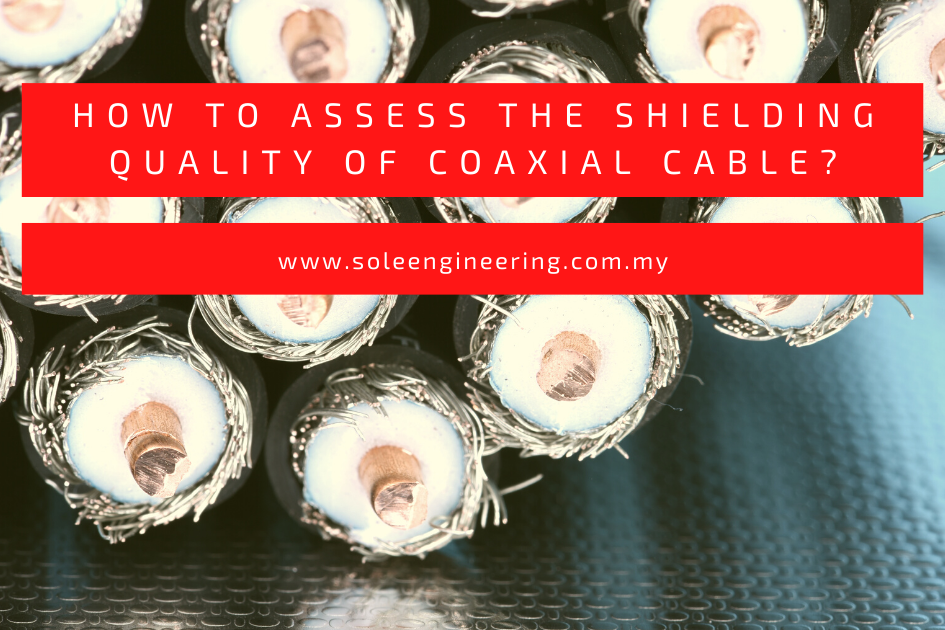What is shielding in cables?
Shielding refers to the presence of an insulating conductor encased in a standard conductive layer. Cables consist of such shields are known as shielding cables. The shied is made up of different substances like strands of braided copper, spiral copper tape, or other conducting polymer or similar metal like copper.
Benefits of shielding
Shielding in coaxial cable offers the following benefits to improve the efficacy of the coaxial cables
- Shielding helps to reduce electrical noise
- It also minimizes the electromagnetic radiation
- It lowers the impact of coaxial wired on the signal
- Shielding also helps to prevent crosstalk between cables near each other
- Shielding provides protection to not only cables but machines and people as well.
What’s shielding effectiveness?
Shielding effectiveness is a characteristic feature of coaxial cable. It can be defined as the ability of cable assembly to either reject the interference from the surrounding environment or to block the signal in cable assembly from leaking into the surrounding environment and in this way causing interference to other nearby systems or subsystems.
Why do we assess the shielding quality of coaxial cable?
The shielding effectiveness is a relevant parameter of coaxial cable that tends to decide the electromagnetic compatibility with adjacent electronic systems thereby providing an adequate shielding against the environment. It is, therefore, crucial to assess the shielding quality of coaxial cable for a solution to these problems.
Methodologies to assess shielding quality of coaxial cable
Various international standards suggest methodologies to analyze the functioning of information technology and incorporate electronics. These testing procedures possess well-defined reference levels for the radiated electromagnetic fields.
A simple method
Shielding Effectiveness
It is a simple method to assess the shielding effects of coaxial cable. For any shielding barrier, it is given by:
Shielding effectiveness in (dB) = 20 log [E ( or H) without shield] / [ E ( or H) with shield]
By exposing the tested specimen to the intense electromagnetic field, this approach is logical with the Shielding Effectiveness definition for a box, a cabinet, or any cage, with SE being a dimensionless figure. Since it would be impossible to approach the remaining E (or H) field inside a wire shield, meaning between the cover and the core, it is the impact of this incident field that is observed instead, for instance, the core-to-shield voltage.
Drawbacks of this method
- It needs the full range of expensive instrumentations including generators, power amplifiers, antennas, etc.
- It brings the typical uncertainties of radiated measurements
- Highly sensitive to the tested cable set-up: height above ground, termination loads, and type of excitation in near field conditions
Transfer impedance method:
As a symbol of excellence, transfer Impedance Zt is a widely used and true parameter, SE or Reduction Factor Kr are often preferred by engineers dealing with product specifications and overall structure because they can co-relate it directly to the whole shielding performance required for the system. It would not make any sense to require 60dB of shielding for system boxes or cabinets if the combined cables and their connecting hardware provide only 30dB, and vice-versa.
(Zt), in comparison with SE, is a purely conducted measurement method, with precise and accurate results, typically within 10% (1dB) uncertainty. But Zt, in Ohm/meter, is not a dimensionless number and shield effectiveness can not be measured.
Shield reduction factor Kr
It harmonizes the two methods, by utilizing the best of Zt – the benefit of a conducted measurement, and SE: the commodity of a direct figure in dB.
Shield Reduction factor (Kr) can be defined as the ratio of the Differential Mode Voltage (Vd) appearing, core-to shield at the receiving end of the cable, to the Common Mode Voltage (Vcm) covered in streak into the twist.
The diagram or figure will help to understand the Mode Switch Ratio between the external circuit (the loop) and the internal one ( the root-to-shield line).
Whereas, minor different versions of this definition are sometimes used like:
Kr (dB) = 20 Log (Vd2 / Vd1)
Where,
Vd1: differential voltage at the receiving end when the shield is not there (disconnected)
Vd2: differential voltage at the receiving end with the shield normally grounded, both ends.
This statement, later on, would be more precise, significantly expressive of the Insertion Loss used in EMC terminology, i.e. it measures what one would get without and with the shield, for the same excitation voltage. This excludes the input of the core wire resistance and self-inductance since they manipulate identically Vd1 and Vd2.
Conclusive thoughts:
The shielding effect of coaxial cable is an important parameter. Assessment of shielding quality of coaxial cables is somehow critical and requires internationally standardized, high-level, and precise methods. Different types of research papers have mentioned their method along with strict criteria, background, and conclusions.







